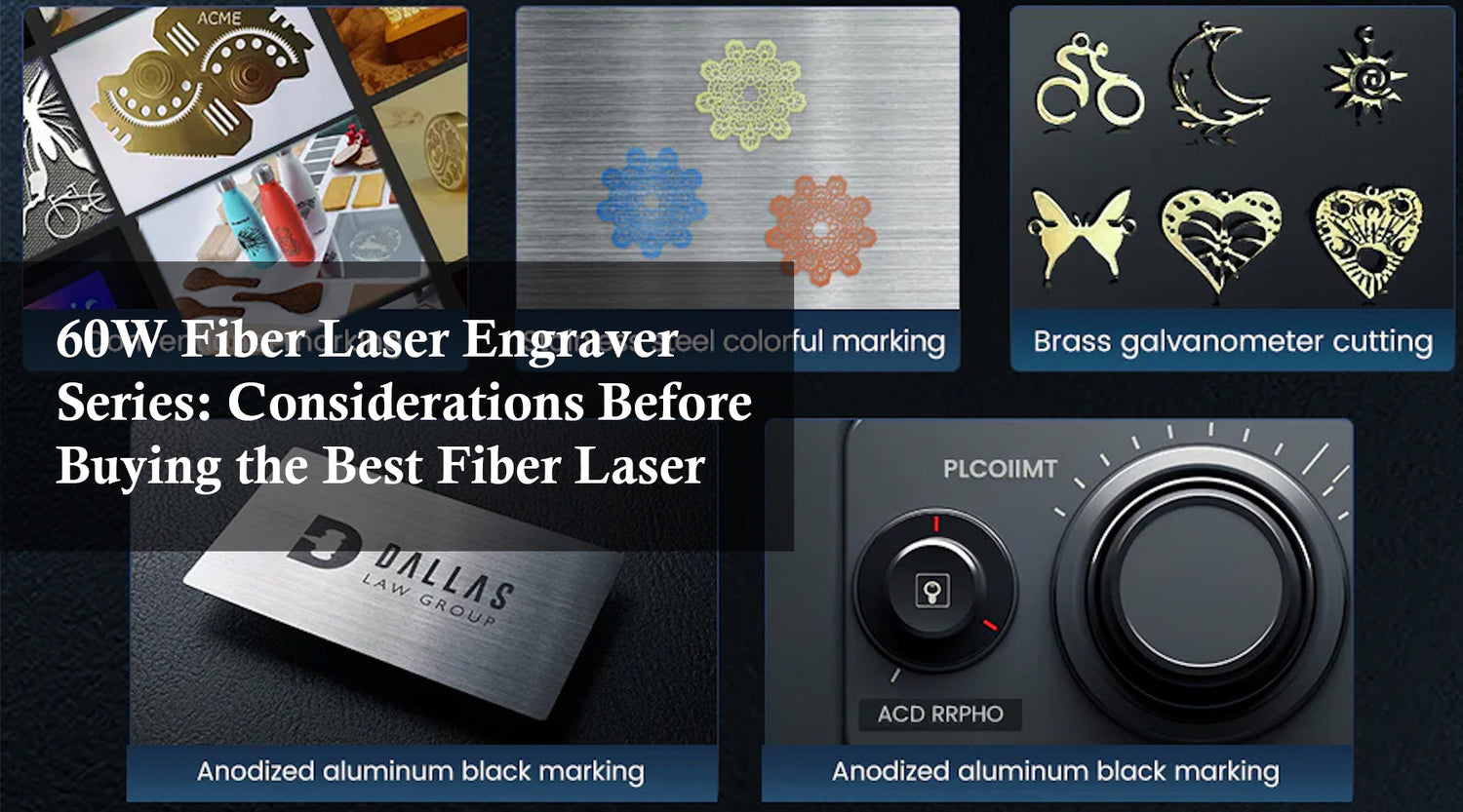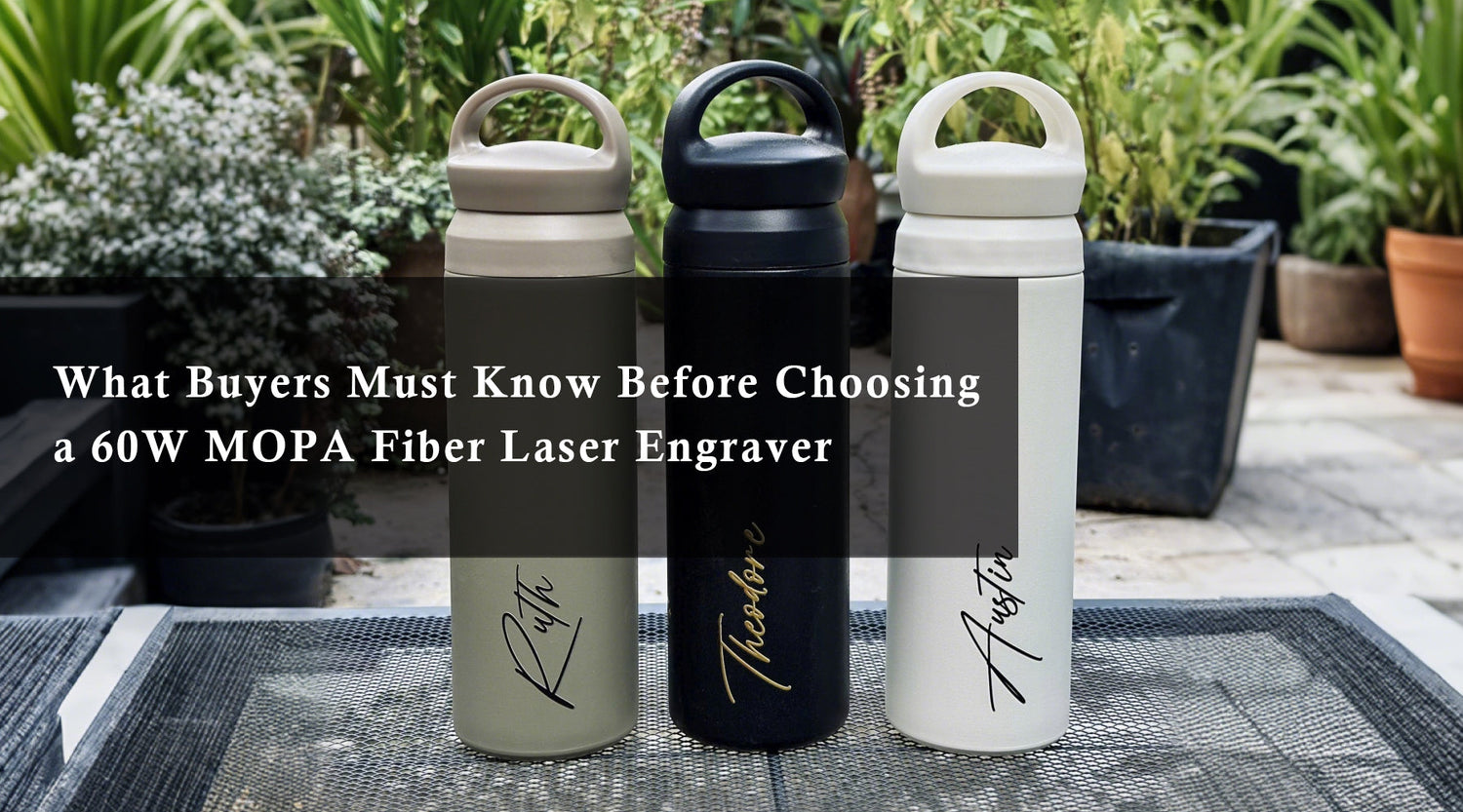What is laser etching?
1. Working principle of laser etching
In the evolution process of engravers, we generally distinguish between laser etching and laser engraving. Understanding simple theoretical principles may play an intrinsic role in our better completion of the carving process.
To put it simply, laser etching is a surface marking process. Through the contact between the laser beam and the material surface, only the workpiece surface is melted, forming a clear contrast in texture. The laser beam must provide high energy that can melt the outside. The result is a black, white, or gray marker. It is famous for its versatility in laser etching metal and glass applications.
From the birth of the first continuous laser beam in 1960 to the invention of the CO2 laser four years later, laser etching technology has gradually been used for laser welding, laser cutting, and other applications. Now, laser etching has been used in automobiles, aerospace, electronics, military, and other industries. It is most widely used in manufacturing, etching serial numbers and barcodes on various parts and sub-assemblies of automobiles, aircraft, medical equipment, etc.
2. Is laser etching permanent?
There are a few different types of laser etching. These include CO2 laser etching, YAG laser etching, and fiber laser etching.
CO2 is the most common type of laser used for this purpose because it's affordable and can be used on many different materials including wood, metal, and glass.
YAG lasers are better suited to smaller projects like jewelry or personal items like name tags because they're more precise than CO2 lasers but also more expensive to buy and maintain due to their high power output (upwards of 10 kW). Fiber optics are another option if you want something that produces less heat than CO2 or YAGs but still offers high precision--they're usually used for engraving text onto metal surfaces such as watch faces or cufflinks
3. Differences between Laser Etching, Laser Marking, and Laser Engraving
- Differences between laser etching and laser marking
Laser marking is the process of forming marks on the surface of materials. Although this sounds like laser etching, there is a big difference between the two. In laser marking, the material will not melt or evaporate. Instead, the laser heats the surface, causing the material to stain due to oxidation. In contrast, laser etching involves melting and/or evaporating the top layer of the material to produce voids or micro bumps that highlight the desired shape or pattern.
- Differences between Laser Etching and Laser Engraving
Laser etching is faster, but laser engraving is more durable. This is because the energy required to reach the melting point of the material (laser etching) is less than that required to evaporate the material (laser engraving). Deep laser engraving may even require multiple laser scans and inevitably takes longer.
You can laser etch glass. The glass is laser etched with the Monport 40W CO2 laser to obtain a gray-white effect and enhance the contrast of the design. In addition, laser etching of glass is preferable to laser engraving because it is a fragile material, and making deep grooves will weaken the glass.
Different cutting depths:
One obvious difference is the cutting depth, which plays an important role in the visibility and wears resistance of the mark. The cutting depth depends on the hardness of the material and the rated power of the laser mark. But laser etching makes the surface melt and has a little cutting effect.
Different yields:
Engraving has been the most cost-effective choice in some industries, while laser etching is a cost-effective choice with higher output because it has better versatility.
Different durability:
Compared with engraving, laser etching mark does not have good wear resistance. Generally, etching marks last about 5 to 10 years, making them unsuitable for manufacturing heavy products or products exposed to harsh conditions. Laser engraving products are very durable due to deeper indentation because their engraving marks are not easy to wear.
Different costs:
Under the same design, same material, and output requirements, the cost of laser engraving is higher than that of laser etching, because it requires more time and high power laser technology.
How to perform laser etching?
1. What materials are suitable for laser etching?
Materials Suitable for Laser Etching
Laser etching is a process that can be performed on a variety of materials. These include:
- Metals (steel, copper, brass)
- Wood
- Plastic (acrylics, polycarbonate)
- Glass (flat or curved)
- Ceramics
2. What type of laser can be used for laser etching?
Some sculptors may think that only fiber lasers can be used for laser etching. This is because etching is a process for metals, which react better to fiber lasers. In fact, the laser you need depends on the type of material you want to etch, not your marking process. Therefore, CO2 laser engraving machines can also realize the laser etching process on some materials.
The nature of the material determines the frequency required to properly penetrate the material and achieve permanent marking. In view of this, fiber laser and CO2 laser can easily produce this effect. Ideally, optical fiber lasers can only penetrate metals and other materials that require high frequencies. On the other hand, CO2 lasers will penetrate glass, wood and other low-frequency materials. A CO2 laser engraving machine is a good tool for laser etching glass.
3. Process parameters of laser etching
The optimal process parameters of laser etching depend on the materials used for etching and the laser engraving machine. Some of the most important process parameters that affect the quality of laser etching are laser power, etching speed, spot size, etc.
Choose the Mid-range Laser Engrvaer
The power of the engraving machine used for etching cannot be too small or too large. It is better to use the engraving machine with medium power. The power is generally better to be above 30w. High power laser usually causes excessive burning of materials, which is not conducive to some minor etching.
Do not use Air Assist
The etching speed should be lower than the general engraving speed. It is also easy to overlook that it is better not to use laser air assist. Air assist uses compressed air to protect the focus lens, promote the removal of engraving materials, and reduce the heat generated by the laser beam. However, using laser air assist during laser etching will cause slight traces of materials on the surface and reduce the etching quality.
Conclusion
Laser etching is an excellent tool for small businesses looking to add a personal touch and differentiate themselves from competitors. By using this technology, businesses can create custom designs on a variety of materials like glass, metal, and plastic. The ability to produce unique, intricate designs quickly and affordably makes laser etching an attractive option for enhancing products, creating branded items, or offering personalized gifts to customers. Whether for promotional purposes or as part of a product line, laser engraver projects offer endless possibilities to boost your business's creativity and visibility in the marketplace.











2 Comments
Sounds like a politician wrote this. Never really providing meaningful tested true results and how this company came to these conclusions with their product and software recommended. Let’s write more scientific blogs here to really sell a quality product.
hello i am interested in a laser engraver / laser etch please contact me via email and call me to discuss 813-918-8508 thank you .